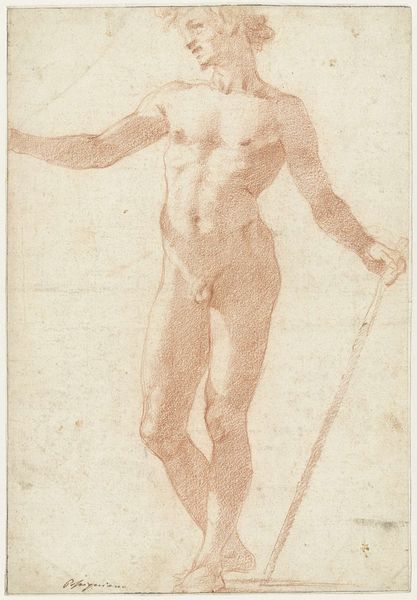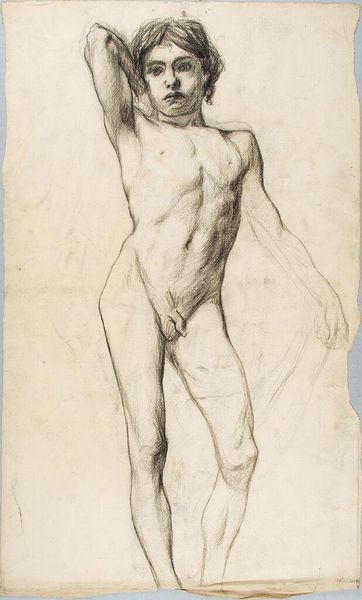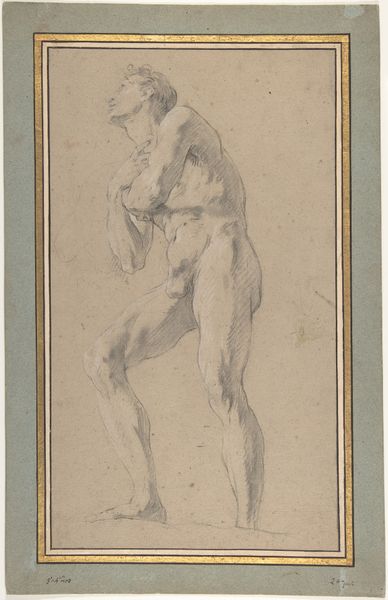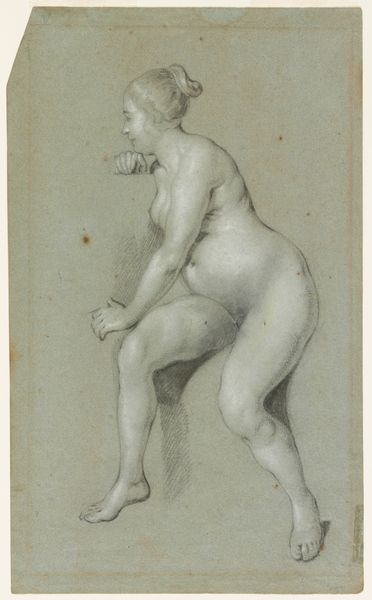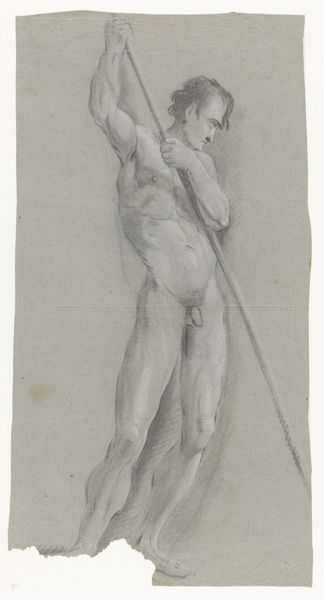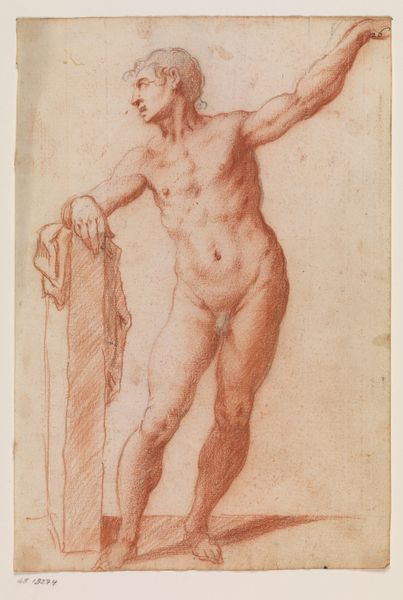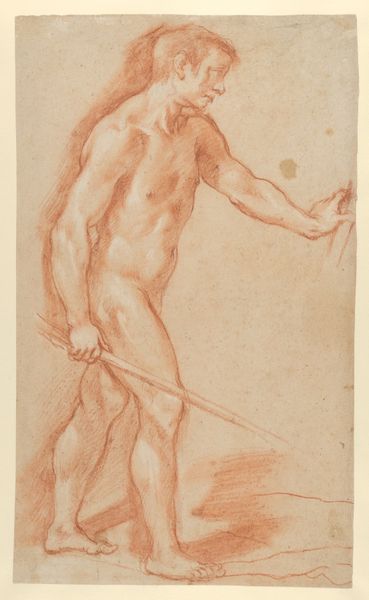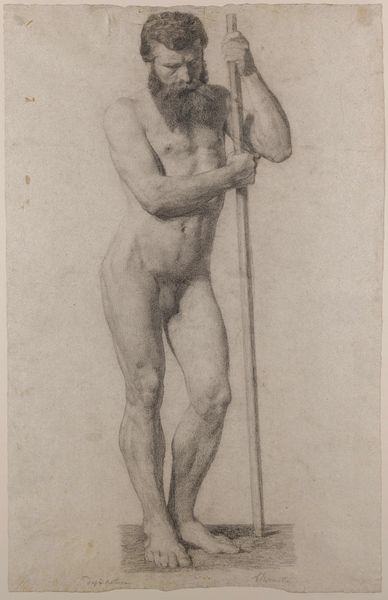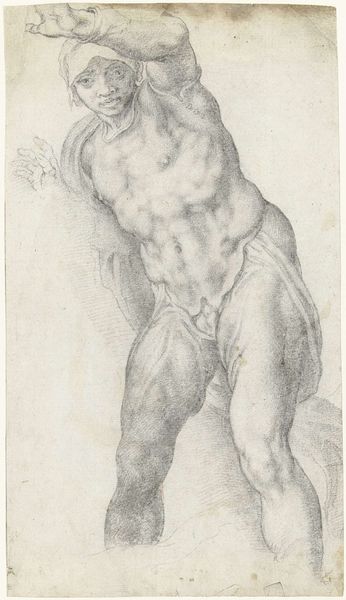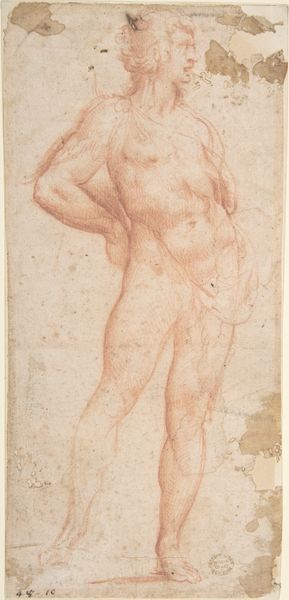
drawing, pencil
#
portrait
#
drawing
#
baroque
#
pencil sketch
#
figuration
#
pencil
#
portrait drawing
#
pencil work
#
academic-art
#
nude
Dimensions: height 312 mm, width 548 mm
Copyright: Rijks Museum: Open Domain
Curator: This is Antonio Carracci's "Study of a Nude Man Leaning on a Club," a pencil drawing from around 1609 to 1610. Editor: There’s a monumental quality despite being a sketch. The shading gives the figure so much weight and presence. The man emanates brute strength. Curator: The figure is very evocative. A club often symbolizes power, authority, and even aggression. What feelings arise as you look at this artwork? Does it connect to stories you have previously heard? Editor: Considering that his pose looks uncomfortable, I feel a lot of inner turmoil from him. What makes this drawing powerful is the interplay of line and shadow – it’s like he’s caught between classical ideals and something rougher, more immediate. You see this figure struggling to find his balance; maybe this hints at more philosophical themes about the burden of strength. Curator: That's insightful. The incomplete nature of the sketch leaves space for personal interpretations. Is he a hero at rest, a captive reflecting on his fate? This reminds me of images from Greek mythology; like Atlas with his burden, it reveals timeless themes of strength. Editor: Exactly. The incomplete rendering allows the eye to complete him, participate in his story. I’m particularly drawn to the geometric rigor suggested by the ground plane – the artist creates a spatial framework that contrasts with the soft organic treatment of the body. I think it's interesting how it feels simultaneously dynamic and static; Carracci captured that perfectly. Curator: And yet, while we are thinking about form, the choice of figure hints to us themes that extend far beyond art itself: Power, responsibility, and the stories we tell ourselves about these forces that have shaped humans and history for centuries. Editor: An intriguing demonstration of a form acting like content itself.
Comments
No comments
Be the first to comment and join the conversation on the ultimate creative platform.

